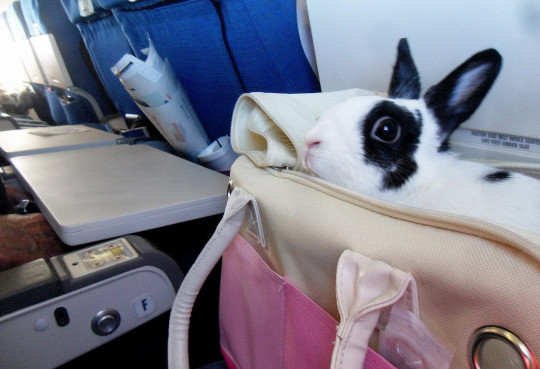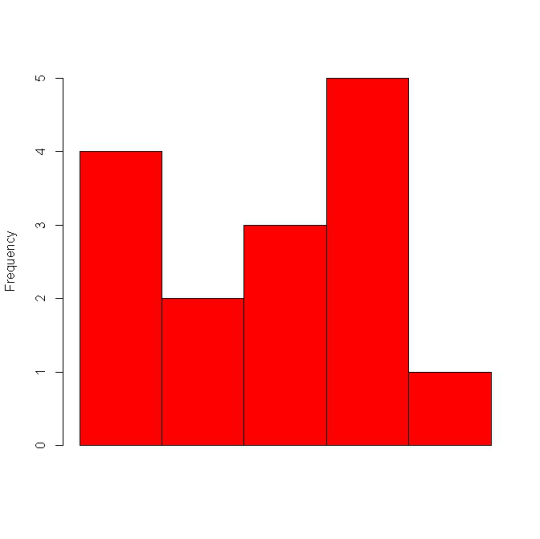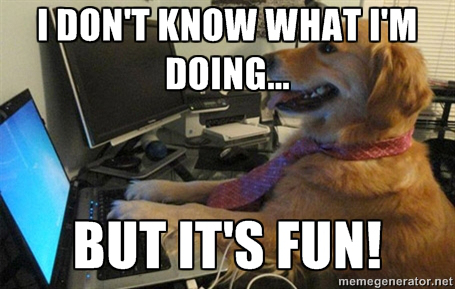Irene Helenowski's Blog, page 8
March 18, 2016
Validation: a Poem
All starts from logistic regression,
But then, what is the progression?
Well, say we get the predicted probability,
And how to get the world where we are meant to be?
We could use a sampling technique.
In hopes it takes away some of the mystique.
And so Randy might want to use.
Bootstrapping, ROC, something of the like to choose.
Anyway, till next week — actually next week is Easter and I might be travelling so if you don’t hear from me…



March 11, 2016
Pairing with paired test
So sometimes we compare different things between different groups but sometimes we compare the same thing between different groups or between different times. Like how well a patient is doing before and after treatment. Or like in my book, I have different alters in different worlds or the same alter in different worlds — but how do they do that? We’ll get to that later? But how … we’ll get to that later! But anyway, so how can we compare characteristics between, say, good Anton in good vs. bad dimensions or bad Anton in bad vs. good dimensions? Well, we might try employing the Wilcoxon signed-rank test or the paired t-test. And there you have it! But again, how can the same alter be in different worlds? Well …

Till next time, thought I’d give you some reading material there.


March 4, 2016
Poem … about the 1-sample chi-squared test
Five world, say,
And where to find.
Anton, that is.
Where’s he’s one of a kind.
So which one shall we see first?
That is the question Randy must ask.
Hmmm … maybe the fourth one, would you say?
But let us put the 1-sample chi-squared to the task.



February 27, 2016
Poem about ANOVA
You have groups more than two,
Oh my, then the t-test just won’t do.
So to compare groups of three,
Or more, ANOVA must it be.
So say Randy must compare,
Three worlds at a time with care,
So does it help get Anton at the end?
Here, you will find out, my friend.
And for today’s pic — it’s two ducklings because … it’s two ducklings :)



February 19, 2016
Risky with Relative Risk: a Poem
You are two groups,
In two dimensions, lets say,
And Randy must find Anton in one,
Which will give him the way?
Get the chance from each world,
And then look at their ratio,
Relative risk in a nutshell,
And to find out how it looks, have my trilogy a go.
Yes, yes, I’ll work on the last line — but until then, you know what you can check out.



February 12, 2016
Had the Flu this week
February 5, 2016
Poem about … the PDF
Otherwise known as the probability distribution function.
So you have one value,
But how likely could it be?
Go to the right — not so much.
Go to the left — ah, now see.
So Randy wants to cover the greater area,
But is that where he shall land?
Then you’ll understand.
Anyway, till next week! Oh, and Randy on a distribution plot would look a little like a mountain climber on a mountain, don’t you think? ;)



January 29, 2016
New Topic Next Week!
But now, a kitten on the beach! I mean, what’s not to love … a kitten … a beach … all you need is your very own copy of … yeah, you get the picture.



January 22, 2016
Incidental comparisons
So a brief of review in cumulative incidence rates indicates the rate of something happening over time. But what if we want to compare several such rates, say, if between dimensions to see if the number of times Anton’s henchmen were caught over time were different or not. Well, we have something called the Gray’s K-sample test, which depends on the ratio between the sum of the means of the incidence rates over the sum of their variances. And then we can determine if the henchmen get caught in those different dimensions at different rates or not. Which may be useful to Randy if he wants to determine where Anton strikes next … and you know how to find that out! But until next time … I’ll just part with telling you about my next passion … screenwriting!

In other words, it’s going really well.


January 15, 2016
WEE and inverse probabilities
So how are the weights calculated for the WEEEEEEEEEEEEEE, sorry, I mean, WEE equations? It’s a model where observations are given weights inversely proportional to the probability that they were observed. And we do that as we do not want to get our results biased. Kinda like if Anton were to actually leave Randy clues about which dimension he could be in. But could Randy really trust those clues? Or could it be a trap? Hmmm … well, in order to find out …. oh yeah … but anyway. Long story short, he might not want to trust those close so he actually ways those dimensions less than those without clues. But anyway, that was just a little more about WEEEEEEEEEEEEEE, sorry, I mean, WEE equations. Until next time …









